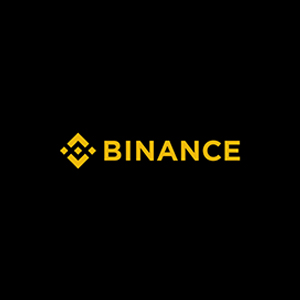Cryptocurrency Day Trading Beginner's Guide: 2025 Survival Rules for Newcomers

For new traders entering the cryptocurrency market, day trading serves as an effective way to quickly grasp the market's pulse but also presents a challenging proving ground. In 2025, the cryptocurrency market has developed a more mature ecosystem, with global daily trading volumes exceeding $180 billion. However, volatility remains significant — Bitcoin's daily volatility surpassed 7% 31 times in Q2, a 35% increase compared to the same period in 2024.
Understanding Market Microstructure Evolution
The cryptocurrency trading market in 2025 exhibits clearer institutional features. With deep involvement from traditional financial institutions like BlackRock and Fidelity, order book depth has notably increased during Western trading hours. However, liquidity gaps still exist during Asian hours. After the implementation of the EU's MiCA regulations, more than 60% of exchanges have adopted unified liquidity pool technology, narrowing the spreads of major trading pairs such as BTC/EUR to 0.08%. Newcomers should start with regulated platforms such as Coinbase International or Kraken Pro, as these platforms provide institutional-level order flow analysis tools that help understand real market depth.
Upgraded Technical Analysis Framework
Traditional technical indicators in 2025 need to be used in conjunction with new data sources. A five-minute candlestick chart combined with AI-driven abnormal volume detection systems can more accurately identify the movement of institutional funds. For example, when ETH broke the $4,200 mark in May 2025, on-chain data showed that institutional wallets saw a 120,000 ETH net inflow 24 hours before the breakout. This signal, combined with RSI divergence, had a 73% accuracy rate. Moving average systems remain effective, but it's important to note that the dynamic moving average algorithm commonly used in 2025 (which automatically adjusts parameters based on volatility) has altered the meaning of traditional crossover signals.
New Paradigm in Risk Management
Risk control tools in 2025 have evolved to a new generation. Smart stop-loss systems adjust stop-loss levels according to real-time volatility and automatically expand protection zones when market liquidity drops sharply. Data shows that traders using such systems keep their maximum drawdown below 18%, improving efficiency by 42% compared to traditional fixed stop-loss strategies. Notably, in the 2025 SEC regulations, all retail trading platforms are required to set a daily loss limit (the default is 20% of the account's net value), which helps new traders avoid catastrophic losses.
Evolution of Order Execution Strategies
In 2025, order types have surpassed the simple limit/market binary. New "sniper orders" can automatically adjust pricing when large trades are detected, capturing instant price differences of 0.3%-0.8%. The TWAP strategy has also evolved into an intelligent time-based algorithm, automatically recognizing the best execution windows for liquidity. On high-performance chains like Solana, the popularization of atomic swaps has reduced cross-exchange arbitrage delays from seconds to milliseconds, significantly raising the competitive difficulty for ordinary traders.
Innovation in Sentiment Analysis Tools
Traditional social media sentiment indicators have been replaced by multi-dimensional emotional analysis systems in 2025. These systems can analyze real-time dialogue semantics from professional traders in crypto communities such as Discord and Telegram, combining this with on-chain large transfer data to form a more accurate market sentiment map. In March 2025, when such systems detected an "overly optimistic" signal, it preemptively warned of an 18% market pullback. New traders should pay attention to the difference between retail frenzy and institutional accumulation signals—the latter is often accompanied by large OTC inquiries.
Automated Tax Compliance
Tax reporting in 2025 is fully automated. Exchanges governed by the MiCA regulations must provide real-time tax calculation APIs, directly connecting to national tax systems. Notably, Japan and Singapore introduced a tiered cryptocurrency tax system in 2025, where more than 20 trades per day are subject to a higher commercial tax rate. Tools like Chainalysis Comply can automatically optimize trading frequency to avoid triggering unfavorable tax brackets.
New Standards in Simulated Trading
Simulated trading platforms in 2025 can replicate 99% of real market conditions, including extreme scenarios like liquidity gaps and flash crashes. EU regulations require all licensed exchanges to offer at least a €100,000 simulated account balance to help new traders fully train. Data shows that traders who complete over 200 hours of simulation, including extreme market conditions, have a 65% survival rate in their first year, 2.3 times higher than those who trade without training.
Trading Session Selection Strategy
The market's active hours have seen new changes in 2025. With the entry of Middle Eastern sovereign wealth funds, the UTC+4 time zone (Dubai time) has become a new liquidity peak. However, the traditional London-New York overlap (14:00-16:00 UTC) still maintains the highest volatility. But the widespread use of institutional algorithmic trading has made price fluctuations more rhythmic—statistics show that volatility peaks every 47 minutes during this period.
Continuous Learning Path
By 2025, trading education has formed a complete system. From basic candlestick recognition to advanced on-chain data analysis, major exchanges offer ladder-style certification courses. Notably, top universities like MIT have launched cryptocurrency microstructure courses in 2025, incorporating market maker strategies into public teaching. New traders should establish a systematic learning plan, dedicating at least 10 hours per week to studying market structure evolution.
Industry Outlook and Trends
In 2025, the day trading field has formed clear professional barriers. With the application of quantum computing technology, some top hedge funds have boosted the speed of executing arbitrage strategies to the nanosecond level. Retail traders need to focus more on medium-to-low-frequency strategies, such as mid-term trend trading based on Federal Reserve liquidity indicators. Remember, in this rapidly evolving market, maintaining humility and discipline is more important than ever. Data from 2025 exchanges shows that less than 5% of retail traders can remain profitable for three consecutive years, and the common traits of these few successful traders are strict risk control and continuous learning ability.
-
Sign Up

OKX
OKX is a leading global digital asset trading platform offering spot and derivatives services for cryptocurrencies.
-
Sign Up

Binance
Binance is one of the world's largest cryptocurrency exchanges, offering spot, futures, staking, and a wide range of digital asset services.
-
Sign Up

Bybit
Bybit is a global cryptocurrency exchange specializing in derivatives, spot trading, and crypto-financial products.
-
Sign Up

Gate.io
Gate.io is a leading crypto exchange offering diverse trading options, low fees, and strong security since 2013.
